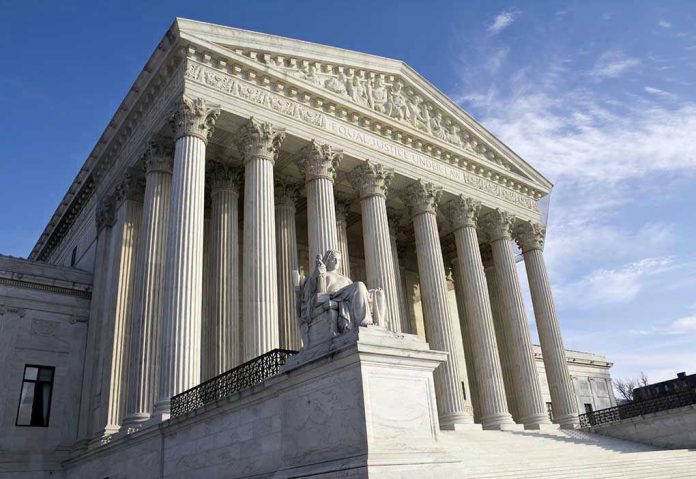
The Supreme Court stands ready to fundamentally alter how America fights racial discrimination in voting, potentially dismantling a cornerstone protection that has shaped election maps for decades.
Story Overview
- Supreme Court justices are reconsidering how race can be used to address voting discrimination
- The case could reshape congressional and state legislative district mapping nationwide
- Voting Rights Act protections that have existed for decades hang in the balance
- The decision will determine when courts can intervene in redistricting disputes
The Constitutional Crossroads
The justices find themselves navigating treacherous constitutional waters as they examine whether considering race in redistricting violates equal protection principles or serves as a necessary remedy for historical discrimination. This legal puzzle has confounded courts for years, creating a patchwork of conflicting decisions across different jurisdictions. The stakes could not be higher for both political parties and minority communities who rely on these protections to ensure fair representation in Congress and state legislatures.
Protesters gathered outside the U.S. Supreme Court this morning as oral arguments in Louisiana v. Callais get underway before the justices, who hold a conservative majority. The case has potential to fundamentally change the Voting Rights Act. pic.twitter.com/WZG169zM7u
— Ashley Murray | @ashleymurray.bsky.social (@Ashley__Murray) October 15, 2025
Decades of Legal Precedent Under Review
The Voting Rights Act has long required states with histories of discrimination to create majority-minority districts when certain conditions are met. These provisions have survived multiple Supreme Court challenges over the years, but the current conservative majority appears skeptical of race-conscious remedies. Legal scholars note that the Court has steadily chipped away at voting rights protections, starting with the 2013 Shelby County decision that gutted federal oversight of election changes in covered states.
From @WSJopinion: Louisiana v. Callais could be a landmark that ends the cynical use of race by both major parties to advance their partisan interests https://t.co/wfRJjwGypT
— The Wall Street Journal (@WSJ) October 14, 2025
Political Implications Beyond the Courtroom
Republican-controlled state legislatures argue that current interpretations of the Voting Rights Act force them to engage in unconstitutional racial gerrymandering, creating districts based primarily on demographics rather than traditional redistricting principles like compactness and community interests. Democratic lawmakers and civil rights groups counter that without these protections, minority voters will lose their voice in the political process through deliberate dilution of their voting strength. The timing proves particularly significant as states prepare for the next round of redistricting following the 2030 census.
The Judicial Balancing Act
The Court must reconcile two seemingly contradictory constitutional mandates: the Fourteenth Amendment’s guarantee of equal protection under the law and the Fifteenth Amendment’s prohibition against racial discrimination in voting. Conservative justices have expressed concern about creating a system of racial quotas in legislative representation, while liberal justices warn that eliminating these tools will enable sophisticated forms of vote dilution that achieve discriminatory results while appearing race-neutral on their face.
Sources:
Louisiana v. Callais and Attacks on the VRA










